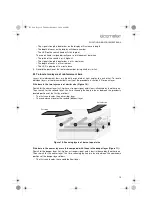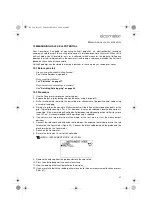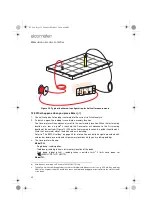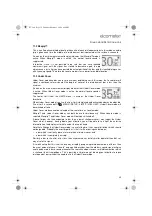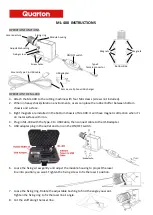
33
S
OUND
MODE
/D
ETECTION
MODE
R
• Single beep - reading taken.
• Double beep - reading taken in last memory location of a row in a grid.
• Triple beep - reading taken in last memory location of the grid.
• Triple beep (higher pitch) - reading taken is outside limits
y
if limits have been set
(
MENU / SETUP / LIMITS).
Figure 21. Beeps (*) and scrolling on a 6x3 grid batch
10.4 Measuring cell-to-cell rather than cell-to-bar
In some instances it will not be possible to make a direct connection to a reinforcing bar. In this
situation it is common practice to use two half-cell probes connected to the inputs of the
Covermeter. One probe is fixed in position on the concrete surface and the other probe is moved
over the surface. In this way the surface can be ‘mapped’.
Using this method, the absolute value of the reinforcing bar to concrete half-cell will not be
measurable, however changes from one point on the surface to the next can be measured and
interpreted.
11 SOUND MODE/DETECTION MODE
Note:
The settings in Sound Mode are applicable to measurement of concrete cover only - they
have no affect when measuring half-cell potential.
Your Covermeter indicates the presence of a reinforcement bar visually and audibly:
•
The
DISPLAY
indicates the presence of a reinforcement bar in the form of a signal strength
indicator bar and a depth of cover reading.
•
The
LED
on the search head starts to glow as the search head is brought near a reinforcement
bar. The intensity of the LED increases as the search head gets closer to the bar.
•
Although the display and the LED indications are important, it is likely that you will also rely
upon the
SOUND
emitted by the internal speaker. This is the main indication of the presence
of a reinforcement bar.
y.
Typically, a low limit will be applied at the threshold that would indicate corrosion e.g. -350 mV. Any readings
lower (more negative) than this would then cause an alarm and be tagged as below limit in the statistics and/
or the batch.
331.book Page 33 Thursday, March 12, 2009 9:46 PM

